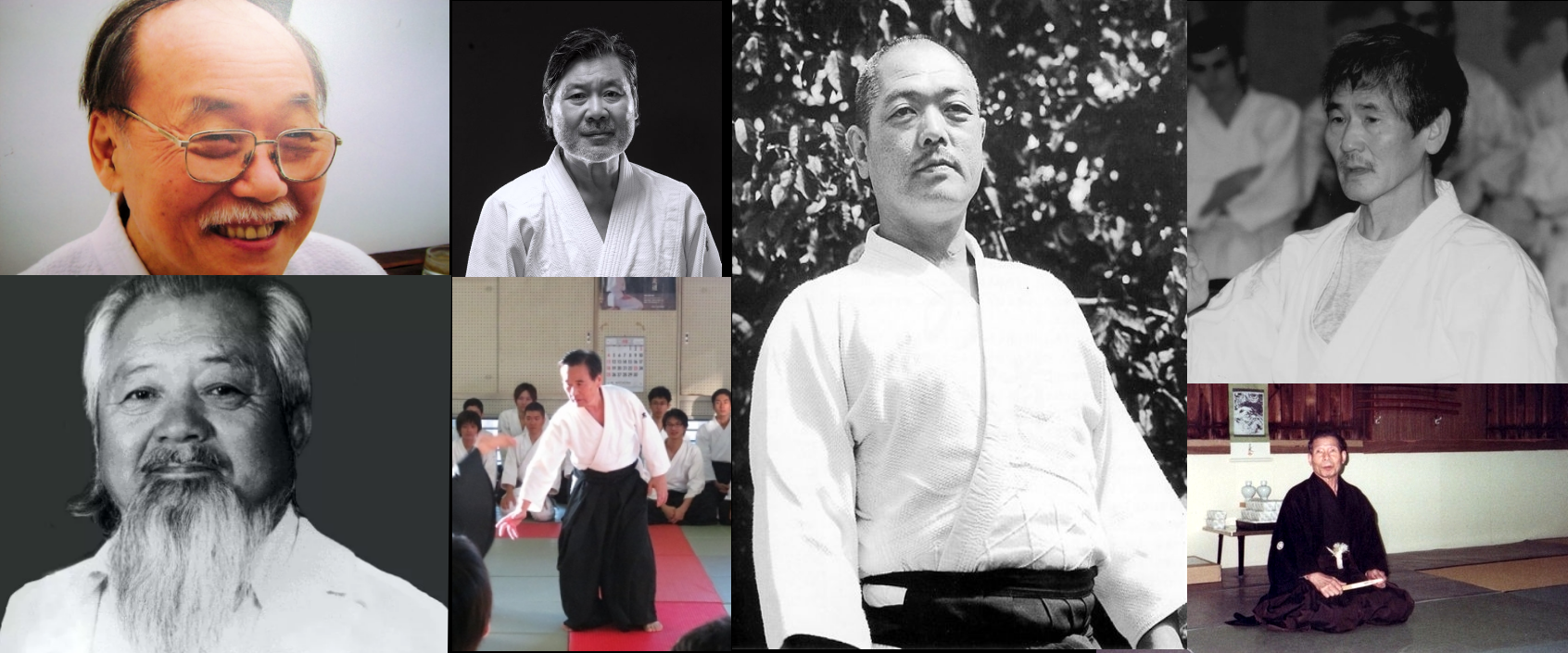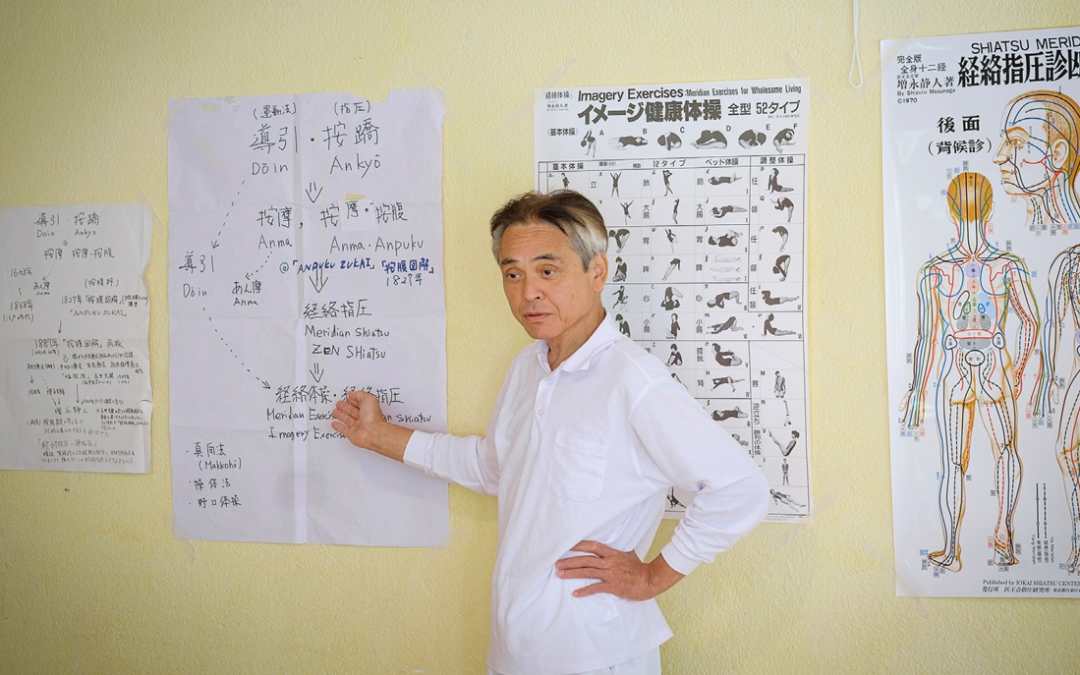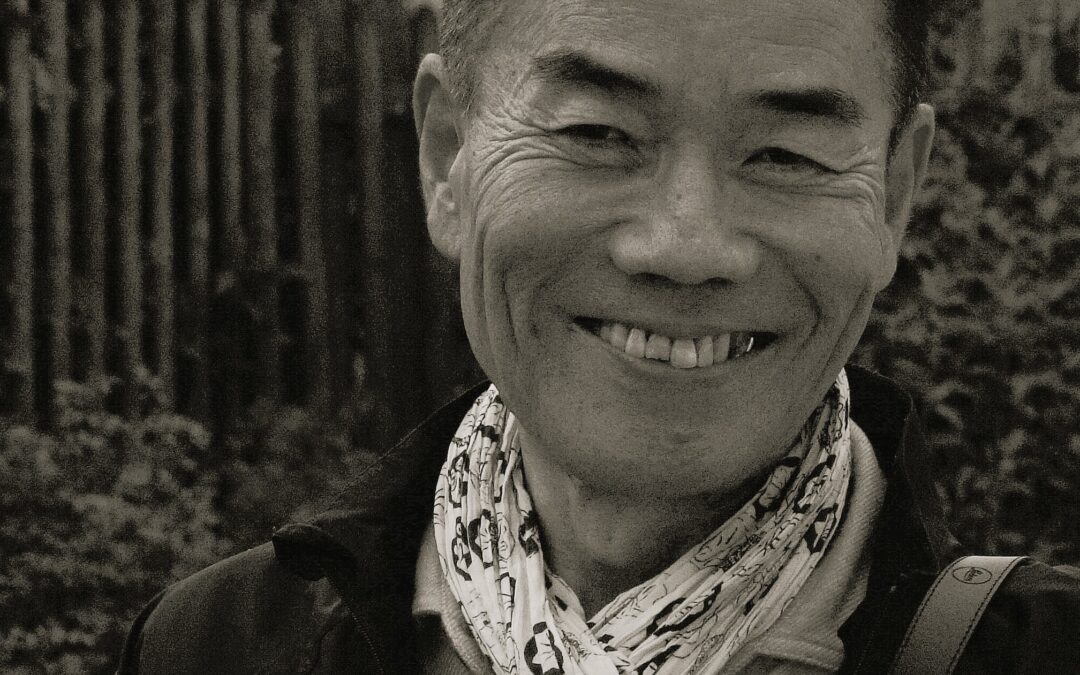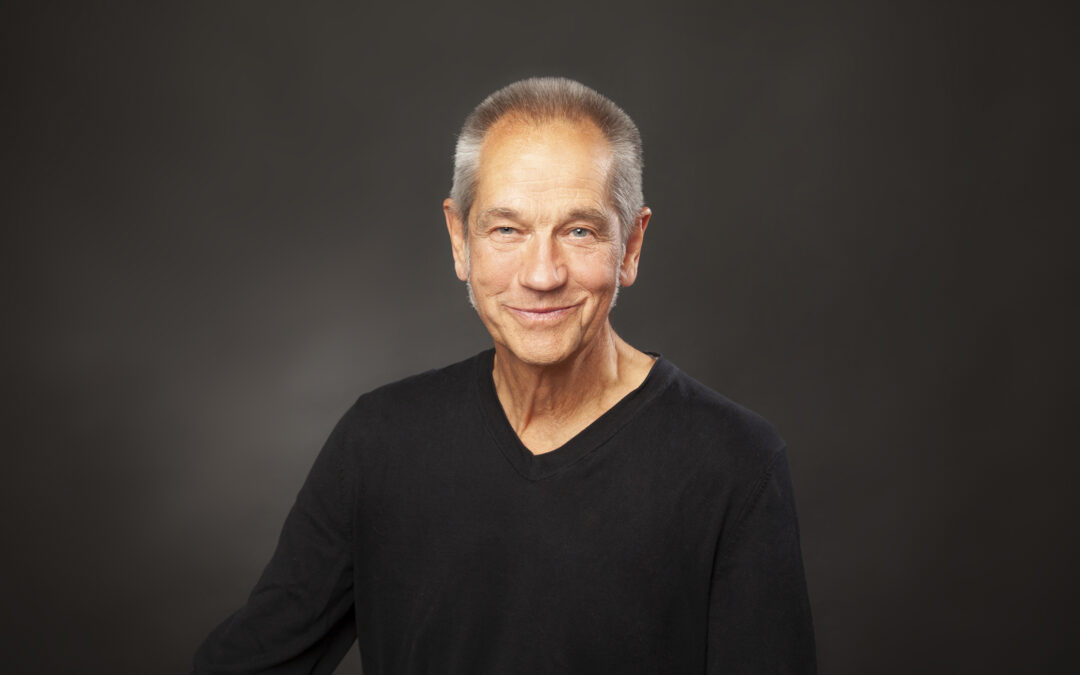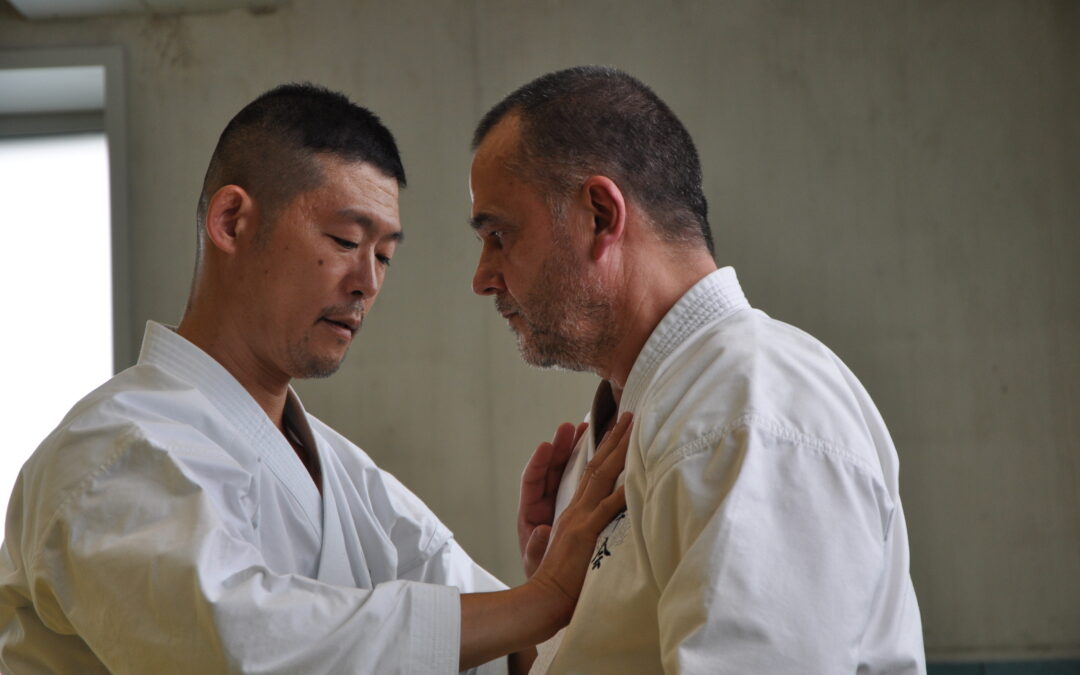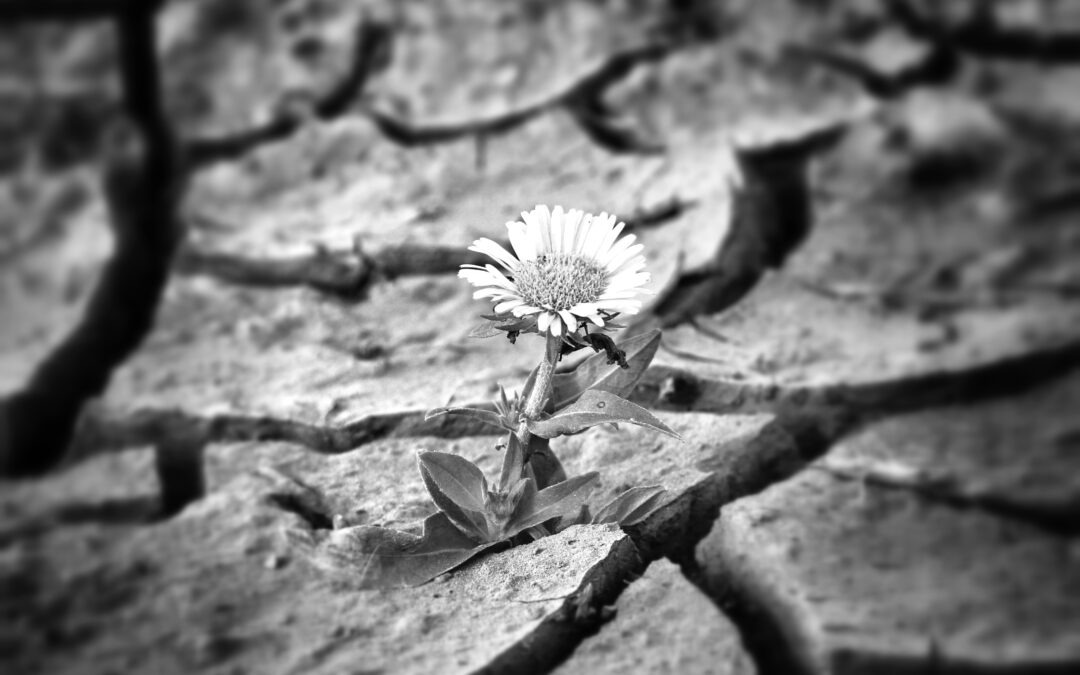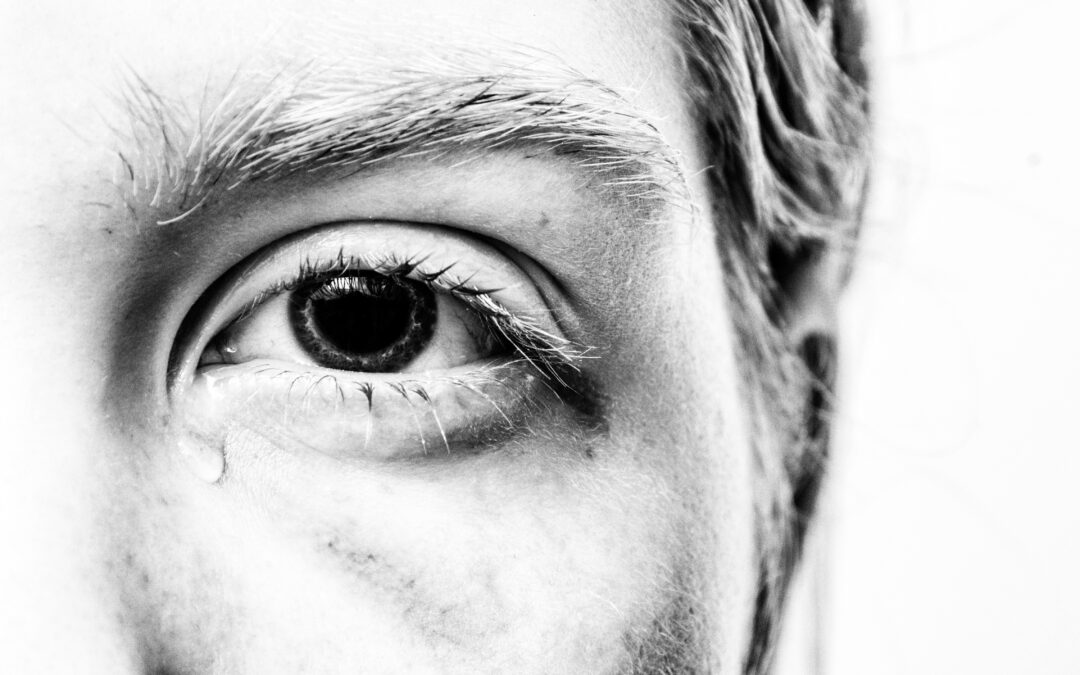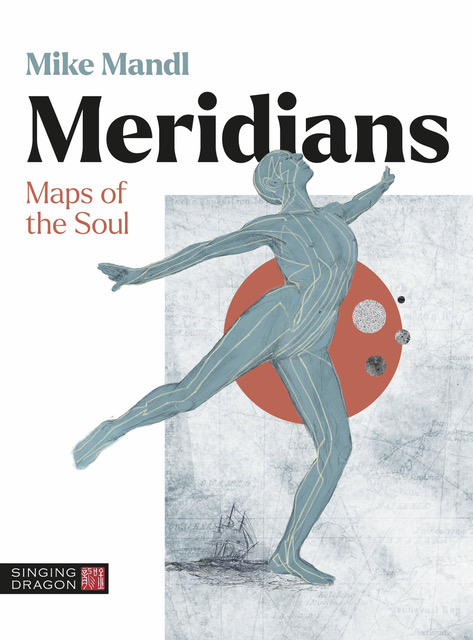The history of Aikido is sometimes mixed with that of Shiatsu, because many Japanese masters have spread these two skills around the world. While they were sent to different continents to disseminate Aikido, they were also great teachers of Shiatsu. Compared to the original article published in Dragon Magazine n ° 28, I added two personalities living in Japan so that you have a better idea of the influence of these masters on Shiatsu today.
Translated by: Odile Fayet
History
At the end of the Second World War, all of Japan went through the pangs of famine and misery. But with the arrival of the 50s, it was a kind of renewal that affected all areas of Japanese society. The country was rebuilding and many techniques were emerging from the dungeons of history to get a facelift. This has been the case of Aikido which had to reinvent itself technically under the major influence of the second Doshu and adopted its message of universal love to distinguish itself from the warrior martial arts before the war (bujutsu). This has also been the case with Shiatsu which has been shedding its moult since its origins in Amma and has been seeking official recognition from the authorities. Hence Aikido advocating nonviolence and Shiatsu establishing peace of body and mind, these two approaches could only meet.
It is common knowledge that O Sensei was a great lover of Anma massage which was very popular in his youth and he regularly asked his uchi-deshi to come and massage him. Masamichi Noro was undoubtedly the one who was most requested by O Sensei. But over time Anma had become the shadow of what it was before and Shiatsu gradually took its place as a manual therapeutic technique until it was officially recognized in 1964 by the Ministry of Health. The essential protagonist of this period was Tokujiro Namikoshi. He was a real media star who made Shiatsu known to the Japanese population. Later on, he even had his weekly TV show. We owe the first encounter between Shiatsu and Aikido to the Frenchman André Nocquet. He was the second foreign student to take courses at the Hombu Dojo in 1955 (after the Italian Salvatore Mergè in 1942), he took basic courses at Nihon Shiatsu School (NSS) (also known as Japan Shiatsu College now) in Tokyo. Since he considered Ueshiba and Namikoshi giants of their times, each in his own specialty, he organised a meeting between them.

Photo linked from Budo Japan: article by Guillaume Erard (C) on an exciting biography of André Nocquet (center). Right Tokujiro Namikoshi. Left of Nocquet, O sensei Morihei Ueshiba. Far left, unknown.
Ueshiba was above all simply curious, but open-minded towards everything related to manual health because he had been suffering for a long time from intestinal disorders. The story does not say whether he had then consulted with Namikoshi or not. From that moment on many uchi-deshi started studying Shiatsu. Hence, when they later went on to spread Aikido around the world, they were also great Shiatsu teachers. The following portraits are proof that Aikido and Shiatsu have a common path.
Internationally
Mutsuro Nakazono
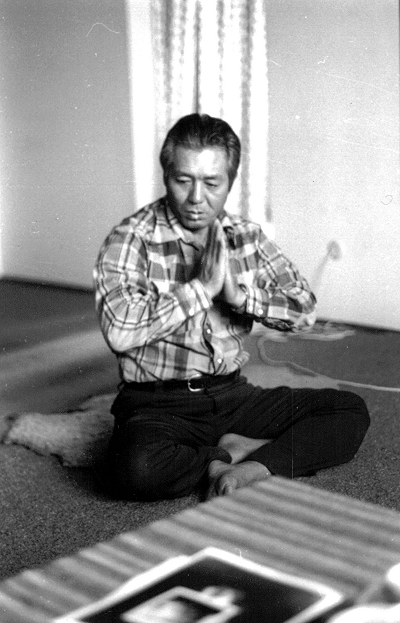
Born in 1918, Mutsuro Nakazono was one of the masters who influenced French Aikido. Nakazono came from a family where martial arts have always paired with
healing arts. Grandson of a sumo champion, he started kendo at 6 years old, judo at 12 and then karate at 19. But he also led an exemplary health course. His mother who was a midwife initiated him very early to first aid for parturients. He learned in particular to turn babies who were in a breech presentation just using his hands. At age 20 he obtained a specialist’s diploma in osteopathy and then began studying Kanpo medicine. In 1942, at age 24 he crossed paths with Shioda sensei when he was already a judo shihan (4th dan) and became interested in aikido.
In the 50s, he became a macrobiotic practitioner alongside the founder “Georges Oshawa” (his real name Nyoichi Sakurazawa). When he arrived in France in 1961, he also had the title of shiatsushi (shiatsu specialist). In 1964, they were three Japanese masters living in France: Masamichi Noro, Nobuyoshi Tamura who has just arrived and him. Together they led numerous courses. But the health arts were an integral part of Nakazono sensei’s life, and he taught shiatsu in Paris. Among his most important students in this field, we find Philippe Ronce, Jean-Claude Tavernier, Pierre Molinari, Michel Odoul and Christine Anrioud.
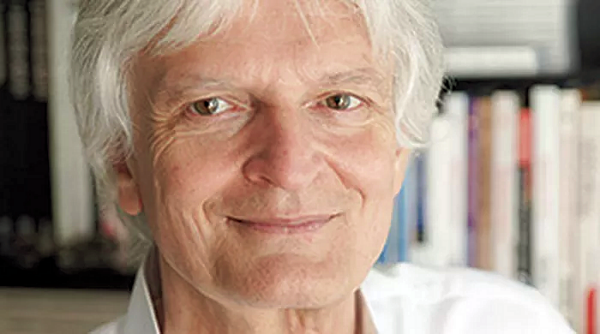
Michel Odoul – who is today a celebrity with no less than 20 books on the subject of natural health and shiatsu – has been deeply touched for life by this encounter with this master whose requirements were terrible. “He was both a master of shiatsu and acupuncture, a university professor of traditional Japanese medicine, all of whose references he knew by heart. I was 25 when I met him. He was a samuraï, you can see it in his books. If we read them literally today, we would say to ourselves “who is this madman”?! He was in this uncompromising samuraï rectitude and so he was someone hard to follow. Moreover, a number of his assistants were unable to complete their apprenticeship. I’ll give you an example: for Nakazono sensei, it was out of the question to arrive five minutes before a shiatsu session. The day had to be prepared because straightness is first imposed on the practitioner. So you had to arrive early, prepare the body, clean the place, meditate, etc. For him the posture of the practitioner was not a privilege, but a duty, an obligation of proper behaviour with all the Bushido code in filigree. The second peculiarity of Nakazono was that when a certain level was reached there were no explanation anymore. If we wanted more, we had to go get it, work, observe and get more involved”.
There we find again all the Japanese spirit which implies that we must “steal the technique with the eyes” (mitori geiko) and not always the will to understand everything, explain everything.
Reishin Kawai
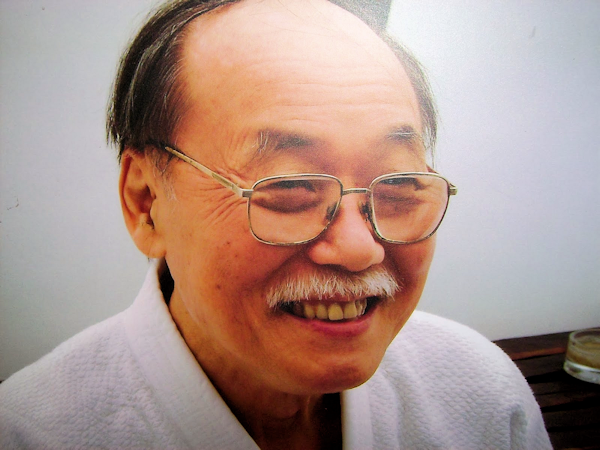
This story begins a bit like that of the founder, Morihei Ueshiba. Born in 1931, the young Reishin Kawai was of weak constitution. To strengthen his body, he began at a very early age martial arts, including sumo and kenjutsu. As a teenager, he suffered chronic inflammation of the right knee and medicine was unable to relieve it. He then turned to shiatsu, acupuncture and a special diet, which ultimately healed him. From that moment, he would be completely convinced of the benefits of these approaches and decided to train. In 1946, he was only 15 years old when he became uchi-deshi of Torataro Saito sensei, a healer master who developed his own method of care. At the same time, he trained him in kenjutsu as well as in Daïto-ryu Aikijujutsu. Saito was himself a friend of Arimoto Murashige sensei who encouraged him to attend O sensei’s lessons during the 30’s. This is how he was able to transmit the basics of what was to become aikido to his young disciple. Reishin Kawai, strongly wanting to learn more, enrolled in the Faculty of Oriental Medicine at Tsukushoku along with Hombu Dojo in order to perfect this dual path of the warrior and the therapist. His teacher will be O sensei Uehsiba, the founder himself, his son Kisshomaru Ueshiba, Koichi Tohei, and sometimes Morihiro Saito in Iwama. He then founded the Nihon Kobudo Iho Fukyukai (Japanese society of martial arts and acupuncture studies) in November 1955.
Yet in the 60s he decided to travel the world. This is how he discovered Brazil where he finally settled to spread Aikido, first at the request of Murashige who had become 9th dan, then officially and directly by O Sensei. He then settled permanently in Brazil where he was the pioneer for Aikido in this country. It was exactly on January 9th 1963 that he opened a first dojo with 42 tatamis in São Paulo. From there Aikido quickly developed, in particular thanks to one of his students of Japanese origin – Keizen Ono – an association which will become a federation. He will also have a strong influence in Argentina and Peru. Whilst practicing aikido for 50 years he never forgot how he was able to save his knee and regularly treated practitioners with shiatsu.
He would pass on this knowledge to his many students, some of whom are now senior officers (Keizen Ono, Makoto Nishida, Wagner Bull, Roberto Maruyama, all 7th dan).
Minoru Kanetsuka
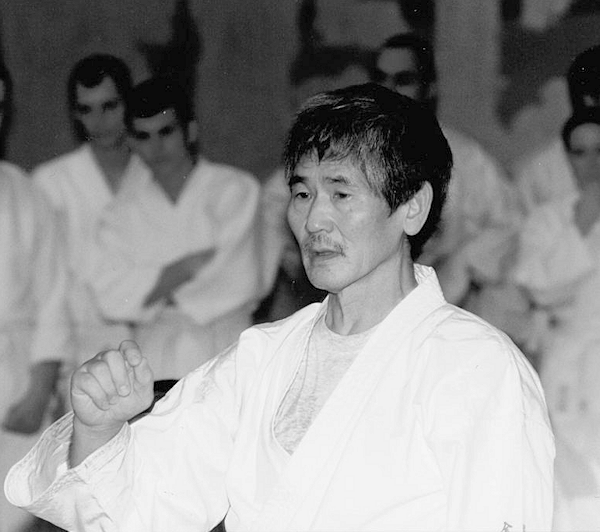
The 50’s and the 60’s were a great period when, according to the wishes of its founder O sensei Ueshiba, young Aikido senseis left around the world to spread his martial art. But these same senseis also had more or less advanced knowledge of Shiatsu in their technical background. That’s for example, the case of Minoru Kanetsuka (born in 1939) who discovered aikido at the University of Tzakushoku (Tokyo) in 1957 and studied under the direction of Gozo Shioda. After graduating from college, he decided to settle in Nepal and taught aikido for 8 years to local police and members of the royal family. In 1972 he moved to England where he became assistant to Chiba sensei, then when he left, he became the technical director of the British Aikido Federation.

Bill Palmer was one of his aikido students, but he also taught him shiatsu in 1973. He remembers that “when I was at university, I was starting to practice aikido. My teacher was also an excellent practitioner of shiatsu. His name was Minoru Kanetsuka and I really liked what he was doing. So, I started studying with him. For 6 years, I watched what he was doing and afterwards, people from the dojo asked me for treatment. So my beginnings are very much related to aikido and the spirit that reigns in a dojo. It was a very simple form of shiatsu, without any theory about the meridians. The practice was based on key points and the quality of touch. Kanetsuka used to say “Shiatsu is like aikido. Do not try to control anything. Just improve your quality of touch and respond to how you feel “or” If you open up to someone’s energy, then it transforms him, but if you try to change him, then he resists“. Bill Palmer later became one of the founders of the UK Shiatsu Society and is today one of the great European teachers of this discipline.
Seiichi Sugano
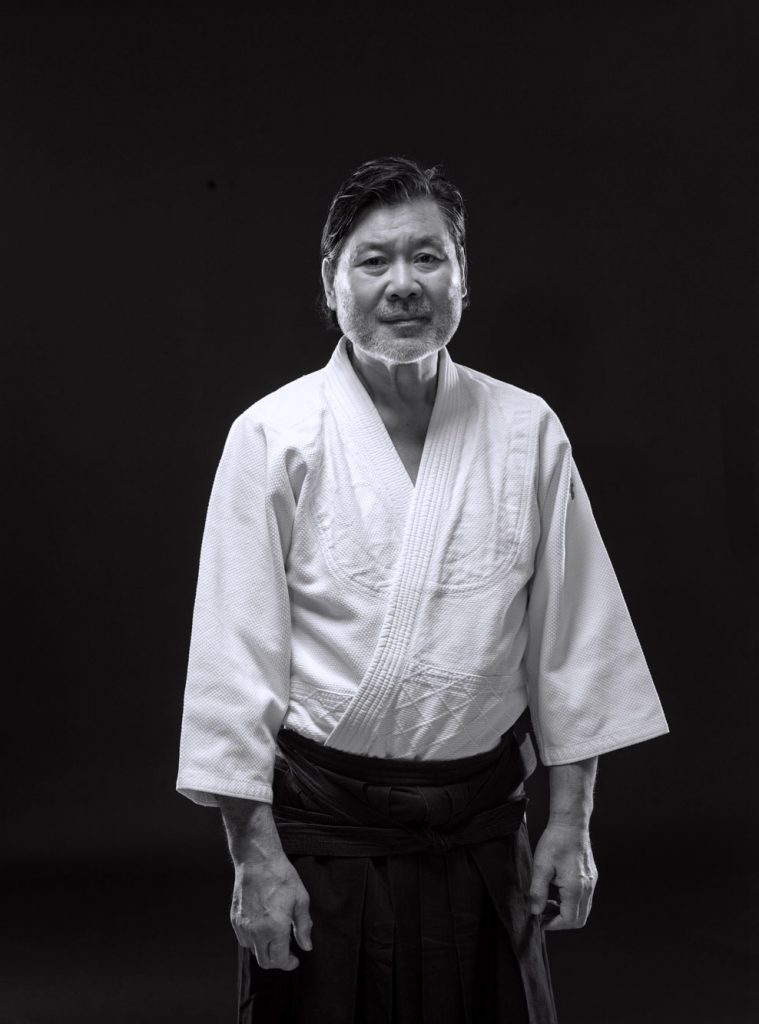
Seiichi Sugano sensei is one of the best known Aikido masters in Australian, Belgian and American aikidokas since he lived in these three countries for many years. Always smiling, loving to laugh heartily, I had the opportunity to interview him. Seiichi Sugano also has an affair of the heart with shiatsu. Born in 1939, he started judo at 6. In 1957, after reading a newspaper article, he decided to go to the Hombu Dojo to see what Aikido was about. He was received by Kisshomaru Ueshiba and right after an interview and a test course he immediately asked to become uchi-deshi but he was only 18 years old. So he had to prove himself and train daily for a year before that happened. His tatami mates were Nobuyoshi Tamura and Yoshimitsu Yamada. Among the instructors of Hombu Dojo, Koichi Tohei (who was the head teacher) will leave a lasting impression on him as he was the only one to speak and work with the notion of Ki.
Is that what led him to take a closer look at energy? The story doesn’t say.
All about of Seiichi Sugano’s journey is well known. Married to an Australian woman, he will be sent there for 10 years to represent Aikido. Then he will move to Belgium for 8 years while going to teach in Malaysia every year. He eventually settled in the United States until his death in 2010. But did he teach Shiatsu?
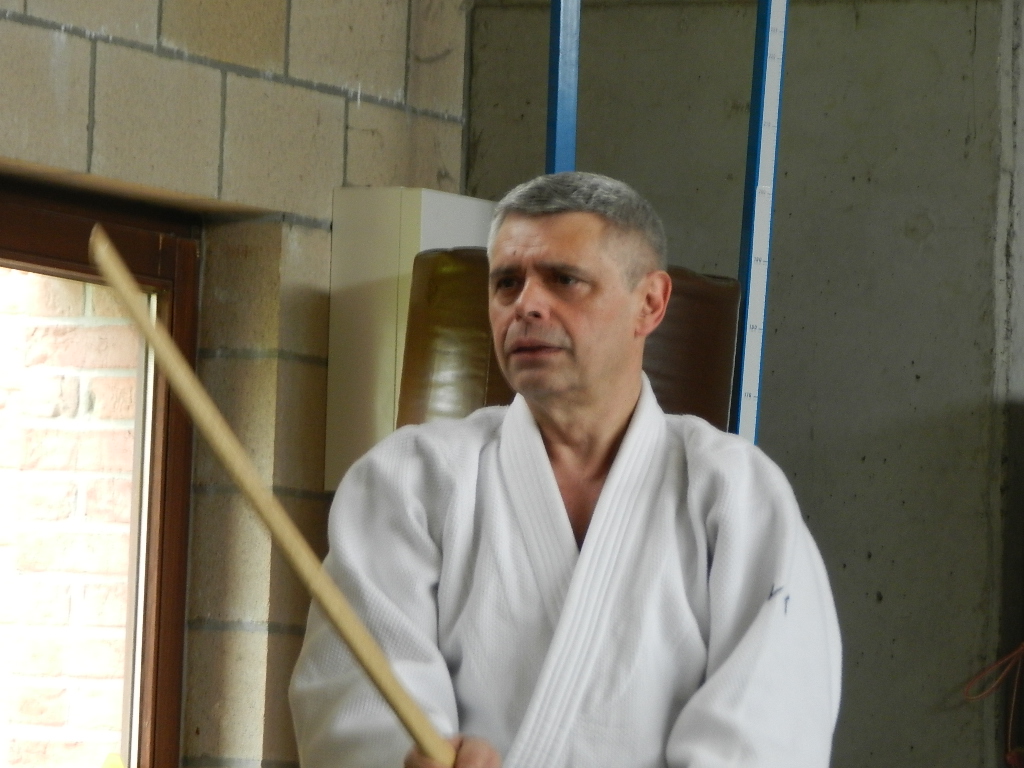
One of his former Belgian students, Louis Van Thiegem Shihan says: “Yes, I do remember the shiatsu lessons that Sugano sensei gave. I can’t tell you where he learned it, but he was teaching it. He was also very scholar in general, so he always spent time reading and learning. It was at the time when he arrived in Belgium, in our dojo, he organized initiation courses in shiatsu for the most assiduous students. It was a very intimate family-like practice, but he knew enough to help someone who suffered from a knee, an elbow or a shoulder problem for example. Since it was not his main activity – he was first and foremost an aikido master – he did not have a practice or anything, but he was quite able to teach and to take care of patients “
Hirokazu Kobayashi
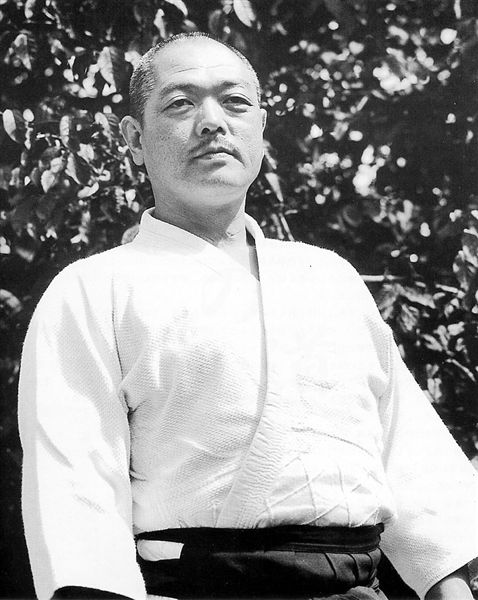
Another legendary figure among the masters of Aikido, Hirokazu Kobayashi was born in 1929 in Osaka. Coming from a family who works in lacquer, his poor health pushes him to practice martial arts from the age of 7 years. His fiery temperament is already at work since he immediately begins not to one, but to three techniques at the same time: karate, judo and kendo. Never doing things halfway and seduced by the nationalist theses of the time, he decided to join the army from the age of 15, which of course is prohibited. However, he finds a way to trick recruiters, in particular by changing the number of buttons hung on his jacket. He will be in all conflicts and six months before the end of the Second World War, decides to be a suicide bomber. Fate will prevent him, his aircraft carrier will be sunk and he will be one of the survivors. Upon his return after his demobilization, he will be a docker in Tokyo’s harbor, unloading fish all day long. He resumed practicing karate, but his master wrote him a letter of introduction so that he also studied aikido with O sensei. The meeting of these two warriors could only work and this is how Kobayashi sensei quickly became one of the closest students to the founder. Eight years later, he returned to Osaka and opened a dojo with the local police. His story is now part of aikido’s legend. Appointed 7th dan at 35 years old only, he will succeed Murashige sensei as European technical director. Teaching 5 months a year in Europe, he also dedicates himself to another of his passions: speed. Riding a motorcycle in Japan and sports cars in Europe, his energy is overflowing. At 42, he was appointed 8th dan. But to see in Kobayashi only a hothead would be a mistake. He is also a man of studies who seeks to know more and more about what surrounds him and more particularly on the human being. This is how martial arts will bring him to Seppo/Kuatsu techniques and a great knowledge of acupressure points and acupuncture meridians. This knowledge he used to heal, shown to his students.
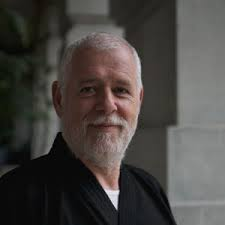
Among the many high-ranking students he has trained, Master André Cognard remembers that: “Kobayashi sensei always looked after us, most of the time at the end of the course, on the edge of the dojo. He practiced joint repair techniques and therapeutic massage. He didn’t quote his sources. The first time he associated me with one of his treatments, I was amazed by the power of his technique. It was an Aikido teacher who complained about a knee problem. Kobayashi sensei asked me to slowly extend the patient’s leg he was flexing while he pressed his thumb over a point on the knee. The result was conclusive. The man was able to sit in the seiza position which was impossible for him just before and walk without suffering.
The experience did not end there for me. When we got to the locker room, our patient burst into tears and began to tell me about a relationship that had caused psychological trauma. When I talked about it to Sensei he just said, “These chronic knee problems are always linked to a complex with the mother.” It would take me a few years to observe it to translate this by: “problematic of separation”. “Loss of possession of the body” and “partial birth”. In an instant, he had brought me into a world, that of the conscious body. “
In Japan
Sadao Takaoka
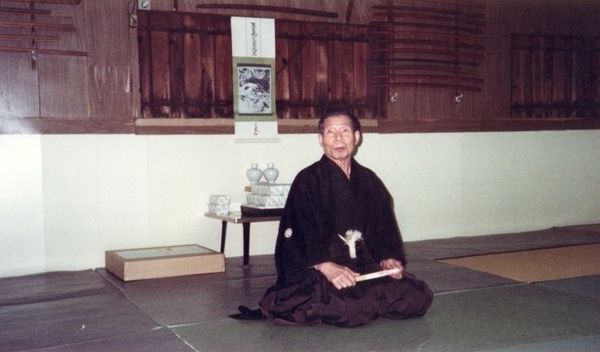
This man is undoubtedly one of the least known masters of Aikido. His uncle was a Buddhist priest and when he told him that he wanted to do Judo, the latter recommended that he went to the dojo of a “mental” martial art, named Aikido. But the teacher had moved. This teacher was none other than the founder himself. Despite this, he started studying with Kusutarou Mizutani in an old school of martial arts: Takenouchi ryu, famous for its seizure’s techniques. He was 17 years old. At that time, during the
Besides the martial course there were also Shiatsu and bonding technique to put the bones back in place. A few years later he opened a dojo. It was wartime in Japan and he had to do night patrols. A certain Hiroyuki Nozawa was sent from Kyoto to do the same, but he was also an Aikido teacher. They went together to teach their martial techniques in the small dojo of Takoka and thus he began to teach Aikido without naming it, because he had not received degrees in this discipline.
In 1945, he was part of the third wave of young men called to go and fight abroad. After 3 months of classes, he joined his regiment (air force) in Korea as a soldier. Nevertheless his manual care capacities got known and he was called by the barracks’ doctor to help a person. “I gave this man two doses of anesthetic, but the pain is not going away. Try to treat him.” He then spent 20 minutes doing Shiatsu and the pain went away. The chief doctor wrote to the general staff so that he would not fight any longer and remained in full-time medical service the next day. This is how he developed a great experience of manual care for illnesses of all kinds and war wounds. His talent was such that when demobilized in 1945, he was refused immediate return to Japan so that he could finish treating the battalion adjudant. He could not return to Japan until October 45. He immediately resumed teaching Aikido, trying to restore hope and joy to the young demobilized after the defeat of Japan.
In 1951, he learned that for the first time in a long time, O Sensei had to return to Wakayama to train the police forces. It was a rather rare stage in the course of O Sensei, since he taught every other day with Koichi Tohei, the other days being dedicated to karatedo with the masters Otsuka, Tomoyose and Yamashiro. Thanks to his friend and colleague Nozawa, he was able to follow all the training with the police. After the lessons, he proposed to O sensei to give him a Shiatsu. This one said to him “Formerly my students gave me a Shiatsu but there is no one training in Shiatsu today. So, maybe just this time?” After the treatment O Sensei congratulated him and asked him if he knew the Nishi Health method (read the very good article by Nicolas de Araujo on Katsuzo Nishi, in French) that he himself was following. He also showed him his method of care with the palms. Thus after this meeting via Shiatsu and Aikido he received the 3rd dan and became one of the students of the founder and was the recipient of many stories from the life of Ueshiba. Their common passions for Aikido and the manual arts of health brought them together until the death of O Sensei. Sadao Takoaka continued to teach Aikido and to heal in Shiatsu all his life. He died in 2002.
Eiichi Kuroiwa
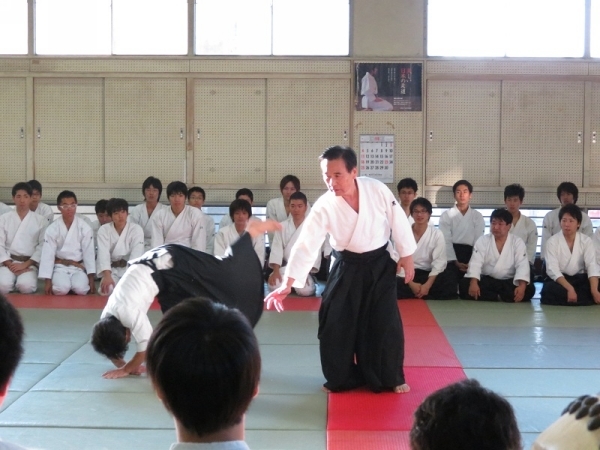
He is one of the post-war students, who started Aikido very early in life, in college at the age of 14 under the teaching of Seseki Abe sensei (in Osaka), in the college’s dojo. This one said to him “It is not a question of force. It is Ki“. Later he went to study at the university to become an electrical engineer and discovered Shiatsu in parallel thanks to Namikoshi’s television broadcasts, and also continued Aikido. He became interested in the study of Shiatsu and followed a basic training at the beginning of the 60’s. In 1963 he met O Sensei and became his student until 1968. During these years there, he proposed to him to do Shiatsu . His memory is as follows:
“He was always happy when I was doing Shiatsu on his back. I felt like I was pushing on an iron plate with my fingers. My fingers bent back and forth. It was not the back of ‘a normal person. I was taught that it was Ki conditioning.” In other words, the energy was so dense in the body of the founder, that it could not enter his muscles.
He still continues to teach Aikido today and offers Shiatsu to his students. One day Kuroiwa was asked what was the difference between Judo and Aikido. He replied: “On one hand, Judo is the world of Newtonian physics, on the other hand, Aikido is the world of quantum mechanics.” Between the two, Shiatsu is the link to treat the body and Ki.
Conclusion
There are many other Japanese aikido masters who have learned (as the founder confirmed) Shiatsu or Anma, but they are not all known to biographers. On the other hand, they all had a large influence in the diffusion of Shiatsu, not only in Japan but throughout the world, because these two arts have multiple links, the most important being the concept of Ki. Today, more and more martial arts practitioners are doing and teaching Shiatsu thus reviving the tradition of koryu (classical schools): knowing how to fight, knowing how to heal.
Good practice.
Author: Ivan Bel
- Anpuku Workshop with Ivan Bel in London – 7 & 8th, June 2025 - 22 June 2024
- Summer intensive course: back to the roots of Shiatsu – 7 to 13 July 2024, with Ivan Bel - 27 December 2023
- Interview with Wilfried Rappenecker: a european vision for Shiatsu - 15 November 2023
- Interview : Manabu Watanabe, founder of Shyuyou Shiatsu - 30 October 2023
- The points that chase away Dampness - 11 June 2023
- Interview Mihael Mamychshvili: from Georgia to Everything Shiatsu, a dedicated life - 22 April 2023
